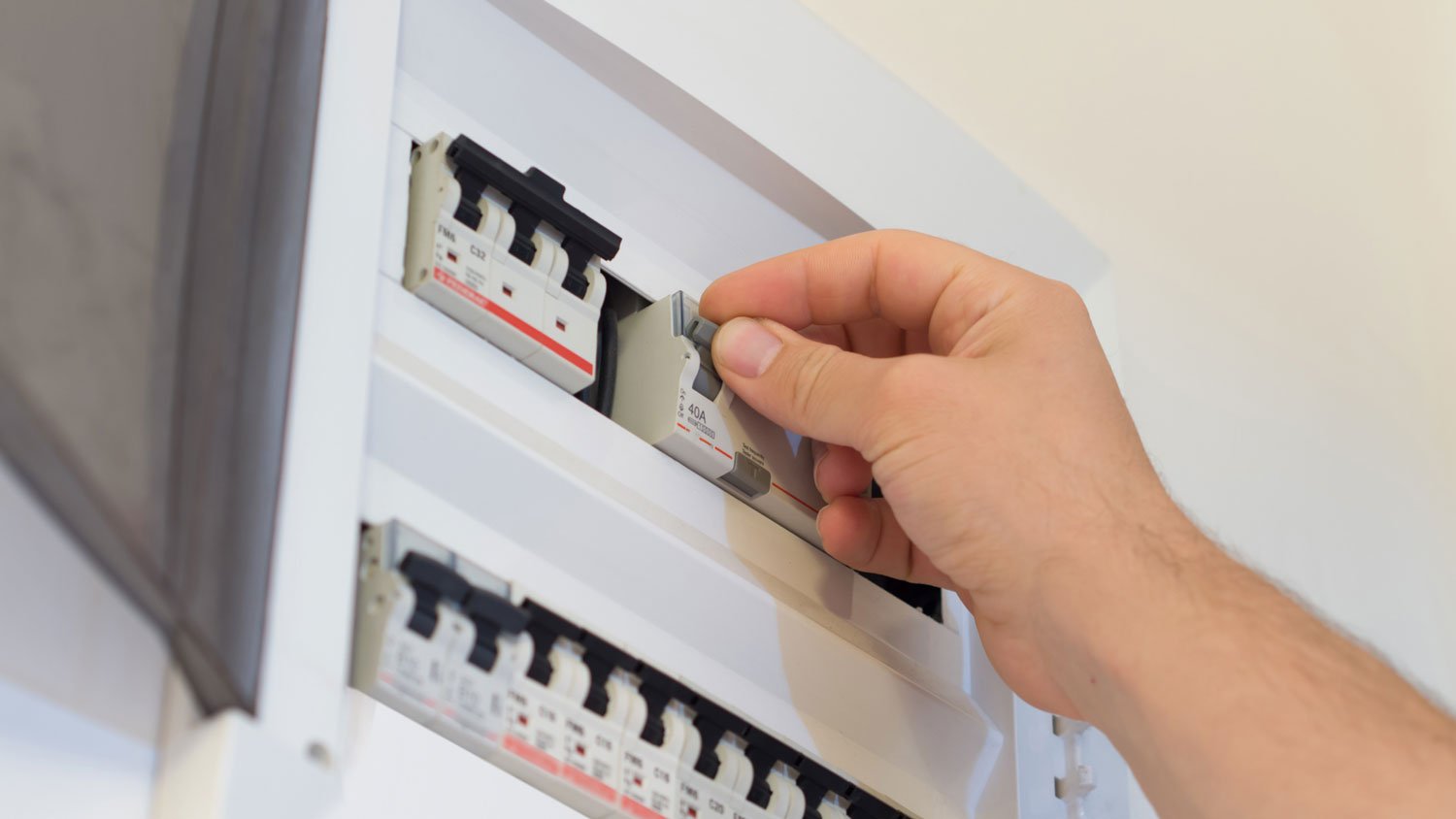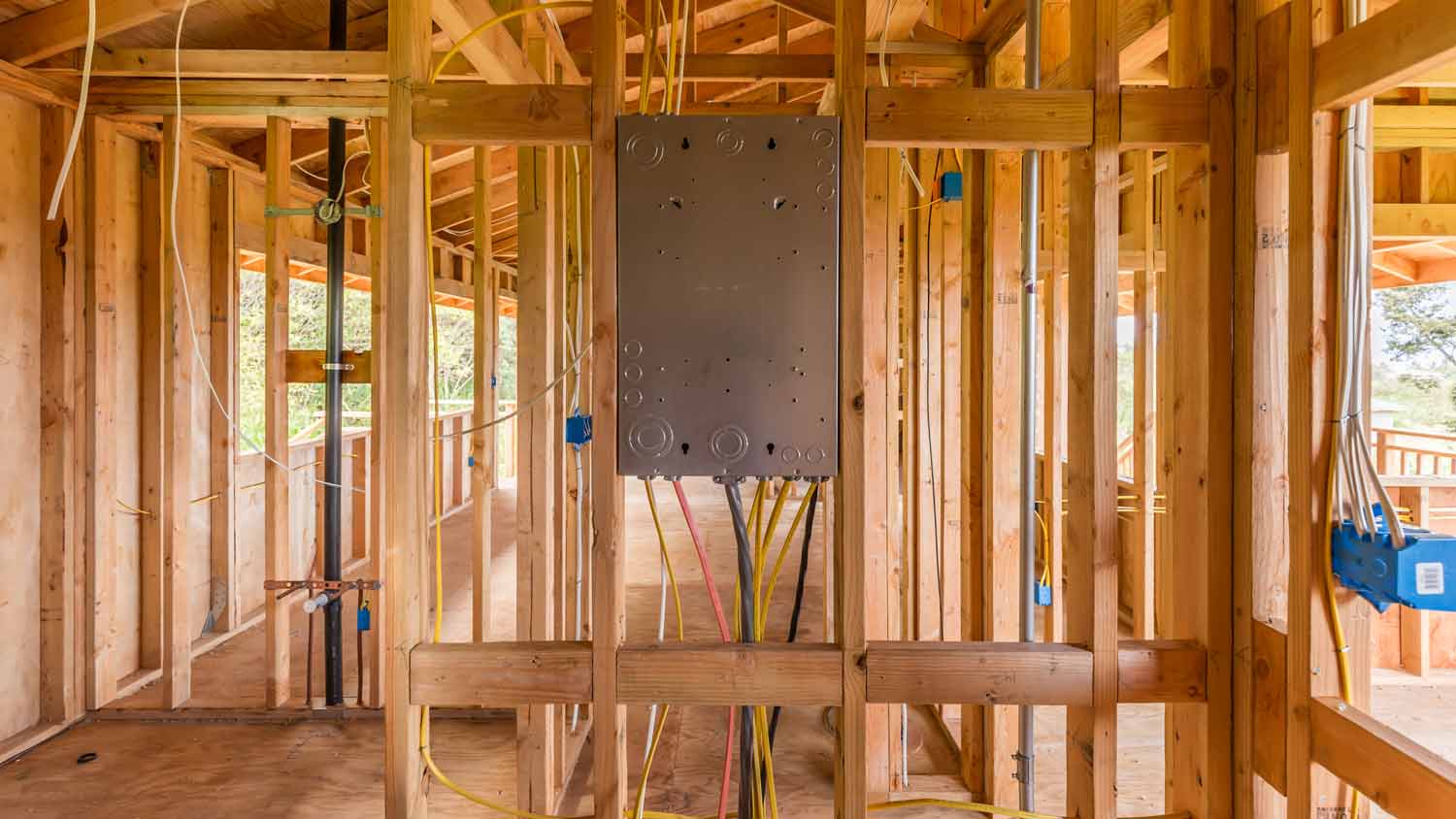How to Reset an Outlet Without a Reset Button
No reset button? No problem


While it might seem daunting, it’s relatively easy to learn how to reset a power outlet without a reset button. While most ground fault circuit interrupter (GFCI) outlets have a built-in reset button, some don’t. If you find you have one without its own button, it’s because there is a main outlet on the same circuit with a reset button. Let’s dive into the steps to reset an outlet that doesn’t have a reset button.
Why Do I Have an Outlet Without a Reset Button?
Some outlets are tapped off of other outlets. In that case, you might have an outlet that’s connected to another outlet with a reset button. For example, if you have multiple outdoor outlets on the same electrical circuit, there might be only one reset button. Similarly if an electrician has added outlets to an existing circuit with a reset button, the additional outlets might not.
How To Reset an Outlet Without a Reset Button
If you have an outlet that you need to reset and it doesn’t have its own button, don’t worry. Here are the steps you can take to fix it:
1. Unplug Your Appliances
If a GFCI or circuit breaker needs to be reset, it indicates that the circuit is overloaded, a problem with a light fixture or appliance that’s plugged into the outlet, or there’s electrical damage somewhere. You should start by unplugging every device and appliance from the affected outlet and any other outlets connected to that circuit. If a power surge causes the GFCI or the breaker to trip, unplugging is still a good idea to avoid damage to the appliances when you turn the power back on.
2. Inspect Outlet for Damage
If you can’t determine the cause of a tripped GFCI or circuit breaker, inspect the outlet for signs of smoke, sparking, popping, or other visible damage. If you identify outlet damage, you should immediately cut power to the outlet from your breaker box. Damaged wiring or components can be a fire hazard and you should hire a local electrician to inspect and fix the issue as soon as possible.
3. Check Your Appliances for Damage
A damaged appliance can cause a fault where power discharges through the case or body of the appliance into the ground. This action will cause a GFCI or circuit breaker to trip, so if a particular circuit has tripped more than once, a malfunctioning appliance could be the cause.
To rule out a problem with a particular appliance, plug something else that’s working into the affected outlet to see if the GFCI or circuit breaker trips. If there’s no issue with a different accessory plugged into the affected outlet, chances are, the appliance is to blame for your outlet woes.
4. Find the Right Circuit

Your electrical wiring is likely controlled by a main breaker box with separate breakers for each circuit in your home. Most of the time, you will find a map or a key inside the door of your circuit breaker box that will tell you which circuits control each outlet. This map is the ideal place to begin troubleshooting your outlet to find how to reset the non-working outlet.
Inspect Surrounding Outlets
If there isn’t a good map, or if there’s no map at all, try looking over other outlets that are nearby the one that stopped working. You will be able to see if the reset button needs to reset on a nearby outlet. Usually, GFCI outlets are located in the kitchen, bathroom, or outdoors. If you have an outlet that needs to be reset from a master circuit, these are the best places to look first.
Use a Lamp to Look for the Correct Circuit
If you’re having difficulty isolating the affected circuit, you can use a lamp with a switch to locate all of the outlets on the circuit. First, plug the lamp into an outlet you know is functioning correctly to ensure it’s working. Then, switch the lamp off, plug it into an outlet, and turn it on. You can continue this step until you locate a GFCI outlet that isn’t working. This will likely be the GFCI that you need to reset.
5. Hit the Reset Button
Once you’ve located the circuit with a tripped GFCI and unplugged everything, you can hit the reset button. It should make a clicking sound when it’s properly reset, and then it should stay in the reset position with the black “test” button out and the red “reset” button in.
If this step doesn’t fix it, you might have a more serious problem on your hands. In that case, turn off the power to the outlet at the breaker, and then contact a licensed electrician to resolve the problem before using that outlet again.
6. Reset Your Breaker
If the problem with your outlet isn’t coming from a connected GFCI outlet, you likely need to reset the breaker. Once you unplugged everything from the outlets on that circuit, head to the breaker box and look for any tripped breakers. Spotting a tripped breaker is as simple as inspecting the box for a breaker switch that’s not quite all the way to the “on” position.
Once you find it, you can reset the breaker by pushing it to the “off” position and then back to the “on” position. The switch should stay in the “on” position once it’s successfully reset.
7. Plug Back In

Once you reset the breaker and outlet, you can plug appliances back in and turn them on. Your devices should work normally once the outlet is reset, but if not, you should ensure the electrical circuit isn’t overloaded and there’s no damage to the outlet.
If a GFCI is repeatedly shutting the power off or if a breaker is tripping, there’s another problem with the circuit and you should hire an electrician to help solve the problem. It’s possible that your outlet is damaged or there’s something wrong with the electrical wiring. These kinds of problems can be dangerous and pose a risk of fire, so this is definitely a time to call in a professional electrician.
How to Prevent an Outlet From Overloading
The most common reason for needing to reset an outlet is overloading it, meaning that more power is being drawn than the circuit can handle. Check that the wattage your appliances are using isn’t more than the wattage of the outlet. Most appliances will have a tag that tells you how much power it needs to run.
You should also consider unplugging appliances and devices when they’re not in use to prevent outlets from overloading. Better yet, switch to more energy-efficient appliances to reduce your home’s wattage use, energy consumption, and monthly energy bill.
DIY vs. Hiring a Pro
If you can find the connected outlet with a reset button, and there are no other problems with your outlet, this is a DIY job that won’t cost anything. However, if this is a recurring problem, or if you find that there is another issue with the outlet or the wiring, you should hire a local electrician. To replace a faulty outlet, it will cost between $200 and $300. To replace a faulty circuit breaker, it costs between $100 to $260.
Frequently Asked Questions
An outlet can trip because the circuit it’s on is overloaded, meaning the devices plugged into it are drawing more power than the circuit can safely carry. Another culprit could be because a power surge from a storm or accident caused a problem with your local electrical grid or there’s a short or a fault causing power to run through the circuit in a dangerous or unplanned way.
A reset button will pop or a circuit breaker will trip as a safety measure to prevent a circuit from overheating, arcing, or catching fire. It’s designed to cut off power to the outlet before a major safety risk occurs to protect you and your home from electrical damage. Hitting the reset button allows power to flow again to the outlet after you’ve addressed the safety risk.
If your outlet needs to be reset multiple times, you likely have a problem with the outlet, the reset button, the wiring, or its connected circuit breaker. If the reset button doesn’t work and the circuit breaker isn’t the issue, it’s likely a problem with the outlet or the reset button it’s attached to.



.jpg?impolicy=leadImage)

- Home Generator Repair
- Lamp Repair
- Electric Repair
- Generator Installation
- TV Antenna Services
- Emergency Electricians
- Commercial Electricians
- Attic Fan Installation
- Attic Fan Repair
- Exhaust Fan Installation
- Electric Inspectors
- Subcontractors
- Electrical Construction
- EV Charger Installer
- Chandelier Installation
- Doorbell Installation
- Bathroom Fan Installation
- Ring Installers
- Electrical Panel Upgrade
- What Do GFCI Electrical Outlet Buttons Do?
- How to Fix an Outlet That Stopped Working When the Breaker Has Not Tripped
- Is a Dead Outlet Dangerous? What You Need to Know
- 4 Ways to Fix Bathroom Outlets That Are Not Working
- Why Is My Outlet Hot?
- Outlets Not Working in One Room? Here’s How to Solve
- How to Wire an Outlet From Another Outlet in 9 Steps
- How to Fix Loose Outlets: A Step-by-Step Guide
- What Is a GFCI Outlet and How Does It Work?
- 5 Reasons Why Your Appliance Keeps Tripping Your Circuit Breaker










